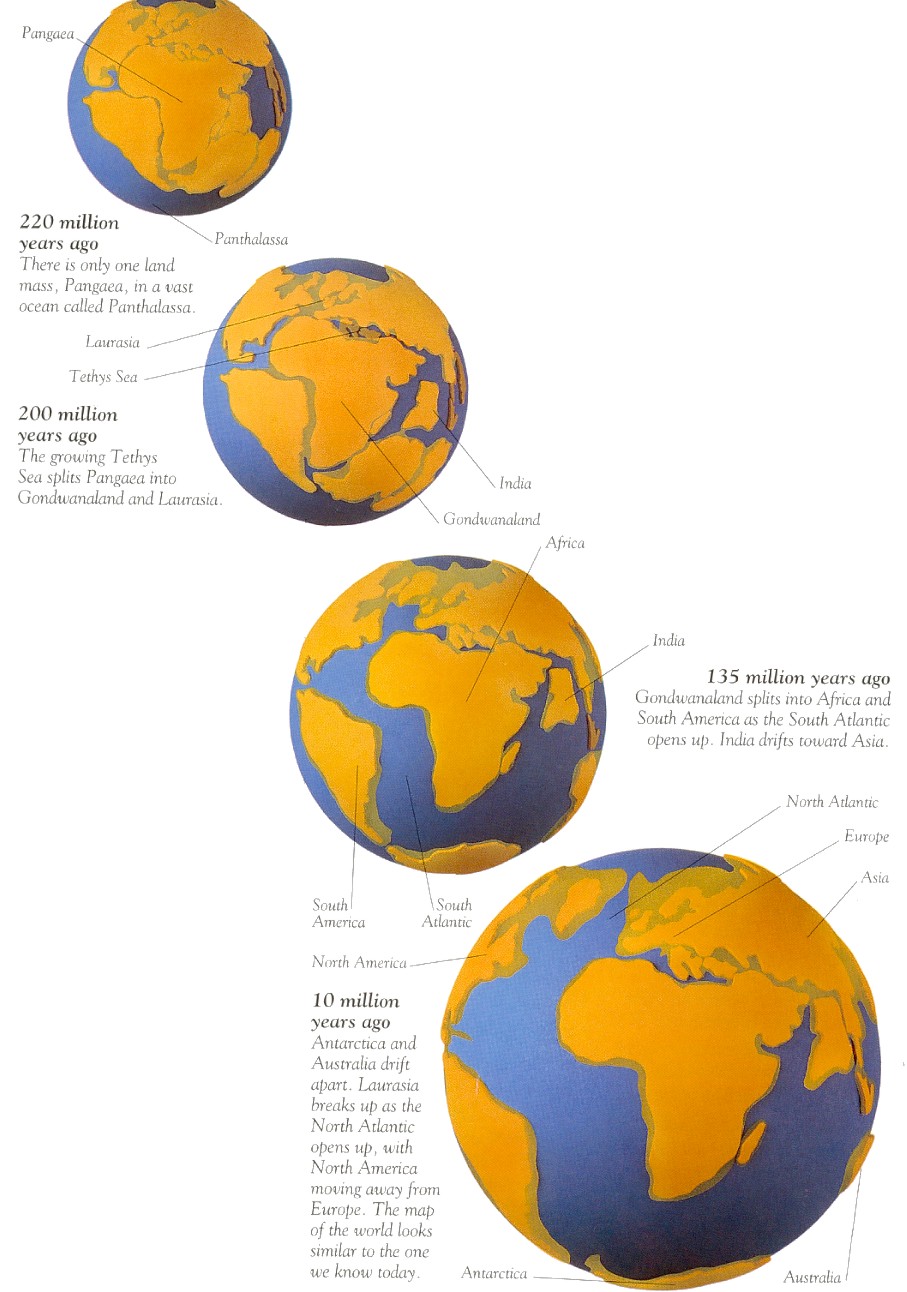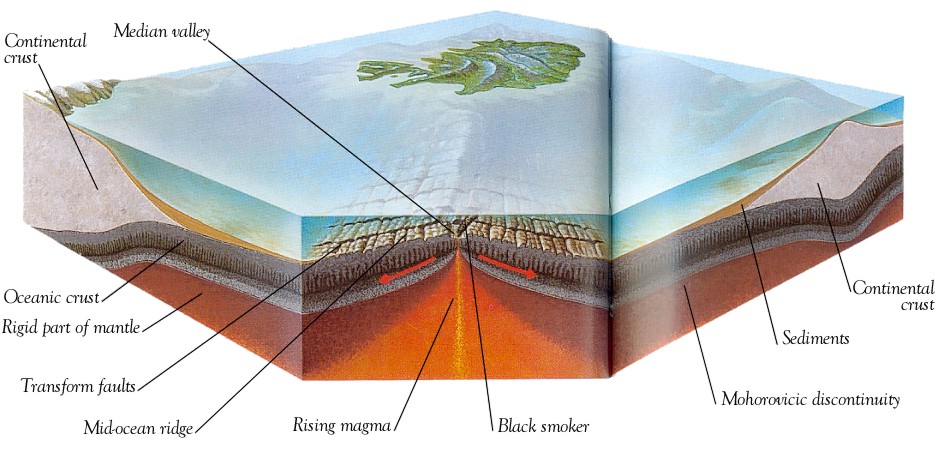| Continental
drift The continents have slowly drifted across the surface of the Earth over millions of years. |
| Image by: Dave Donkin, Dorling Kindersley |
Continental drift:
The drift of
the plates across the surface of the earth has been going on over millions
of years,
which still changes the outward appearance of the earth. When you
look at the map of the world, you see how well the east coast of North and
South America fits into the west coast of Europe and Africa. Over millions
of years these continents have slowly drifted apart. (continental
drift).
Diverging plates:
Where plates pull apart, hot molten
rock (fluid magma) emerges as lava and so new matter is added to the
plates. In this way new oceanic plates are formed. The place where this
happens is known as a mid-ocean ridge. Mid-ocean ridges are rarely more
than about 4,920 ft.(1,500 m) high, but they may snake along the ocean bed
for thousands of miles. Beneath each of the world's great oceans there is
a mid-ocean ridge. An example is the Mid-Atlantic Ridge in the Atlantic
Ocean, which stretches from the North Pole to the South Pole. Mid-ocean
ridges are areas of much volcanic
and earthquake
activity.

